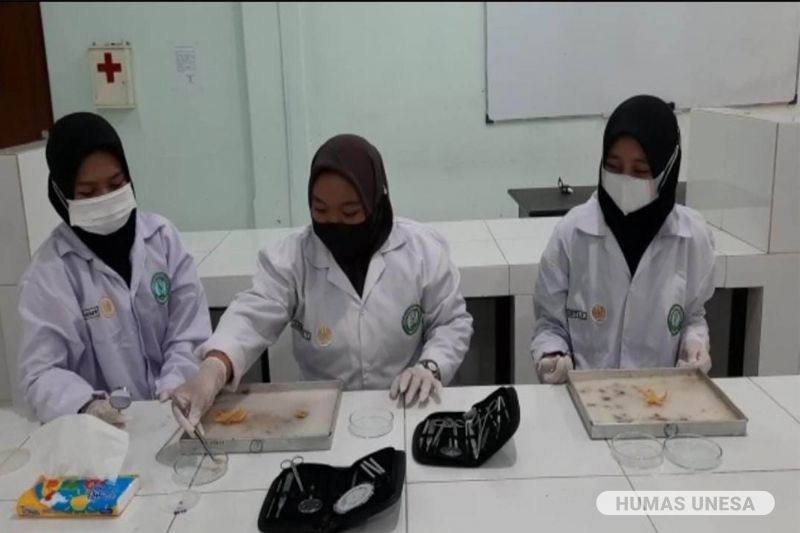
www.unesa.ac.id
Unesa.ac.id, SURABAYA-Sea stars are invertebrate animals that belong to the phylum Echinoderms and belong to the class Asteroidea. These marine animals are one of the sources of bioactive compounds and have antioxidant, antibacterial, anti-inflammatory and many more activities.
In addition to having these contents, sea stars also have the potential as bioindicators of heavy metals. That is what FMIPA UNESA students researched along Bangkalan Beach, Madura.
The students who are members of the PKM-RE Team are students majoring in Biology consisting of Yusfita Kurniawati, Arneta Yolanda Maramis, and Istatic Mudloifah. The research idea, said Yusfita, was inspired by the uniqueness of Indonesia's natural wealth, which of course has many benefits. However, many people use it.
He continued that sea stars have important ecological values, among which these animals are associated with coral reefs, beach cleaners from organic materials so that they have potential as marine bioindicators.
Sea stars (Asteroidea) also play an important role in the coastal environment, which eat carrion and mollusc shells that litter the beach, so starfish are known as marine cleaning animals. "It was from these benefits that the PKM RE idea was sparked and managed to escape funding from Simbelmawa," said Yusfita.
The head of the guidance team, Dwi Anggorowati Rahayu, S.Si., M.Si, explained that this research is very important because the starfish can detect the heavy metal content of lead (Pb) in seawater on the north and south coasts of Madura.
The interim result of their research is that sea stars have potential as bioindicators of heavy metal lead caused by industrial waste disposal. The indicator is marked by the low diversity of starfish and the decrease in the number of individual starfish along with the increasing concentration of heavy metals on each coast.
In addition, sea stars also meet biota specifications that can be used as bioindicators, namely they cannot move quickly, have soft body tissues and obtain food from organic substances at the bottom of the waters, are easily identified and can accumulate pollutant substances.
The environmental condition of the starfish is pH (6-7). It is hoped that this ecological data can be used as a guide for starfish conservation efforts in the future, added Arneta, who is one of the UNESA Asteroidea team.
"The research results of the UNESA Asterioidea team provide opportunities for further research related to the distribution, molecular data, nutrition, and sustainable management of this starfish," said Istatic. (UNESA PR)
Share It On:






